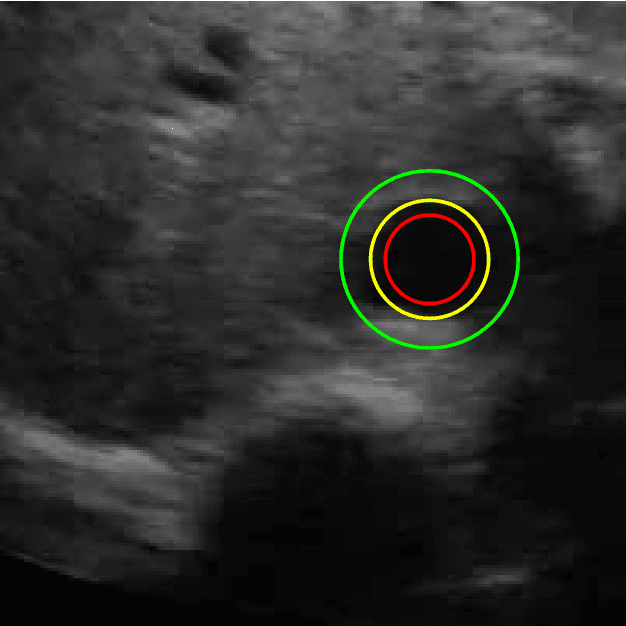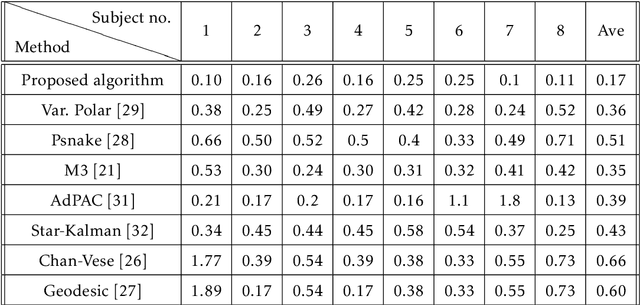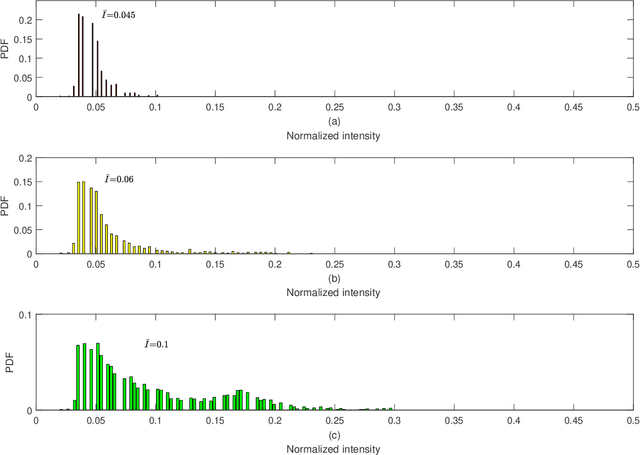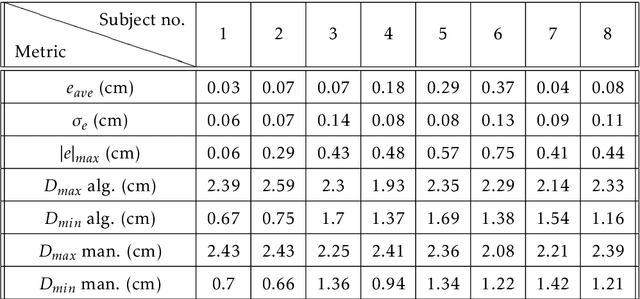Estimation and Tracking of AP-diameter of the Inferior Vena Cava in Ultrasound Images Using a Novel Active Circle Algorithm
Paper and Code
Aug 08, 2018



Medical research suggests that the anterior-posterior (AP)-diameter of the inferior vena cava (IVC) and its associated temporal variation as imaged by bedside ultrasound is useful in guiding fluid resuscitation of the critically-ill patient. Unfortunately, indistinct edges and gaps in vessel walls are frequently present which impede accurate estimation of the IVC AP-diameter for both human operators and segmentation algorithms. The majority of research involving use of the IVC to guide fluid resuscitation involves manual measurement of the maximum and minimum AP-diameter as it varies over time. This effort proposes using a time-varying circle fitted inside the typically ellipsoid IVC as an efficient, consistent and novel approach to tracking and approximating the AP-diameter even in the context of poor image quality. In this active-circle algorithm, a novel evolution functional is proposed and shown to be a useful tool for ultrasound image processing. The proposed algorithm is compared with an expert manual measurement, and state-of-the-art relevant algorithms. It is shown that the algorithm outperforms other techniques and performs very close to manual measurement.
 Add to Chrome
Add to Chrome Add to Firefox
Add to Firefox Add to Edge
Add to Edge